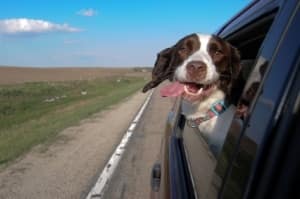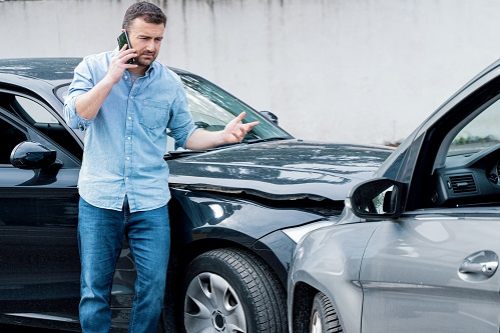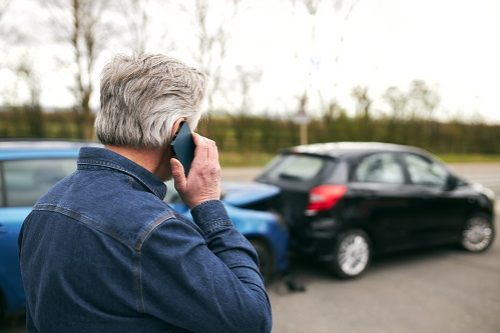Does homeowners insurance cover pets?
In addition to covering your home and belongings from storms and theft, homeowners insurance also covers off-site damage caused by family members that live with you, including your pet. Renters insurance provides the same type of coverage.
That means if your cat scratches a child down the street, homeowners insurance can pay the child's medical bills. If your dog chews a friend's living-room rug, your insurance can replace it. Good relations are maintained.
But -- and "but" is the crucial word in insurance -- there are exceptions, things your insurance won't cover, or will provide less money for. These are tucked inside the policy under "exclusionsItems that are specifically denied coverage under the terms of an insurance policy. For example, most auto insurance policies exclude coverage for normal wear and tear, drag racing and intentional acts." and "limits," respectively.
"If you own a dog, you must read the personal liability section and you must look at the exclusions; those are two different sections," says Kenneth M. Phillips, a California lawyer who specializes in dog-bite cases. "It is becoming more and more of an occurrence for insurance companies to exclude coverage for injuries caused by an animal."
Check under "exclusions" for breeds the insurer either won't cover, or requires individual approval to cover due to a propensity for aggression. These may include pit bulls, Rottweilers, German Shepherds, Akitas, Chows, wolf hybrids, bull terriers and Presa Canarios.
Homeowner insurance limits on pets
Homeowner insurance policies typically provide between $100,000 and $300,000 in liability coverage on a standard policy. But, again, don't assume those apply to the pet -- read carefully for any mention of limits.
Phillips had a client who'd been bitten by a friend's dog. "No problem," the dog's owner had said. "I have $300,000 in liability coverage." But the owner's insurer pointed her to a little clause she'd overlooked: when it came to incidents involving the dog, coverage was only for $50,000.
The medical and other bills exceeded that amount, as can often be the case. Damages can include legal costs, emotional and physical pain, and loss of future wages and enjoyment.
"We had to go after the woman individually to pay," Phillips says. "She was shocked. She hired a lawyer, said, 'I bought a $300,000 policy.' The lawyer said, 'Sorry, you should have read it.'"
Some companies won't exclude breeds outright, or are prohibited by state law from doing so. But they may require the owner to submit behavioral evaluations, and will likely cancel coverage following an incident.
"You're always going to need to check with your carrierAn insurance carrier is the company that provides your car insurance policy and pays claims.," says Paul Vames, a lawyer in Hillsboro, Oregon. "Certain breeds require a vicious-breed rider, or endorsementAn endorsement is a supplement or change to an insurance policy. It amends the original policy and can increase or decrease coverage, change names or update addresses.. . . . You need to let the insurance company know you have that kind of breed."
Do you need an umbrella insurance policy if you own a pet?
Also known as a personal excess liability policy, an umbrella policy can extend coverage to other areas, such as libel or rental units, and, more importantly here, raise the total dollar amount for all coverage.
Phillips recommends that anyone with a dog, particularly a medium or large dog or a high-risk breed, buy an umbrella policy.
"It's going to cost you under $100 and it's going to get you $1 million coverage," he says. "And the person who gets hurt by your dog is going to be your niece, or your friend's son, or your neighbor."
Does auto insurance provide coverage for your dog?
You know your auto insurance will provide some medical benefits for your injuries and those of your passengers. But what about your pet?
The answer is a bit complicated. In the insurance world, pets are generally treated as property. As such, if the other driver is at fault, his liability would cover your loss. That would include what you paid to treat your pet.
If you are at fault, however, your collision coverage kicks in, if you have it. And collision doesn't cover the property in your car. You're on the hook for any vet bills.
In response to this gap, some auto insurance companies have begun offering drivers separate pet-injury insurance, so if you are interested in getting such coverage, be sure to ask about it when you compare auto insurance companies.
Progressive kicked off the trend in 2007, and its coverage is automatically included in collision, paying up to $1,000 for a pet injured due to an accident, fire or theft. Others are doing the same, including Erie and Auto-Owners.
"Pets are part of your family," Progressive states, "they're your passengers, too. So shouldn't they be covered by your auto insurance policy? We think so."
Several other companies offer what Arbella Mutual Insurance calls a "pet lover's endorsement," which for $20 a year buys you $500 in coverage. The Chubb Group offers $2,000 worth of pet-injury coverage. Always check the fine print to make sure your particular pet is covered, particularly if it's an exotic animal.
Of course, the question remains as to whether $500, or even $2,000, will be enough. As anyone with pets knows, vet bills can easily run higher. Which leads to the question that may most haunt new pet owners: is pet health insurance worth the cost?
Veterinary insurance: don't expect an immediate return
Only 1 percent of pets in the United States are covered by pet insurance, according to the North American Pet Health Insurance Association. Of the pets covered, 85 percent are dogs.
In Germany, Scandinavia and the UK, where pet insurance began a century ago, a quarter to three quarters of pets are covered.
In addition to the fact that pet insurance is relatively new in this country -- VPI was the first to open its doors here, in 1982 -- some of the difference in adoption rates may be due to Americans' perception of the role of insurance.
Those in the industry say clients and the media often ask whether pet insurance guarantees an immediate return on investment. They then do the math on an annual basis. By this calculation, the answer is typically "no."
Pet insurance generally costs between $300 and $500 per year, depending on the company and the benefit plan. As with people's health insurance, plans offer varying deductibles and co-pays, as well as treatment maximums and annual limits.
"In an ideal world, we wouldn't need pet insurance because we'd put money aside every month," says Kristen Lynch, executive director of the North American Pet Health Insurance Association. "But we don't live in an ideal world."
"The whole point of insurance is to pool your capital so when you're not claiming it, other people can," she says. Meanwhile, you have bought peace of mind, knowing the money's there when you need it.
"In an emergency situation, having insurance can take away the sting of an unexpected cost concerning a pet's health," says Dr. Steven Rowell, director of the emergency hospital at Tufts University Cummings School of Veterinary Medicine.
How to transport your dog in your car safely
If you let your dog ride loose in the car, it's a danger to the dog and to you and others. When a car stops suddenly, a loose pet can become a projectile.
"In the event of a crash, your pet becomes a missile in the car," AAA spokeswoman Heather Hunter says.
Safety experts say this fact often comes as a great surprise to pet owners, nearly one in five of whom let small dogs crawl on their laps. Here are some others:
- Any size dog can easily be killed by the massive force of an airbag. If a small dog is on someone’s lap, that explosive force will not only crush the dog but can severely injure the person behind it. Dogs should ride in the back.
- After an accident, a loose, frightened dog will run. Stories abound of dogs struck and killed by another car, or causing other cars to swerve and crash. If your dog causes another accident, your homeowner's and auto insurance may try to deny coverage.
- In an accident, where owners and dog alike may be injured, even a friendly dog is likely to bite rescue workers who reach their hands inside. It is not the dog’s fault. Its protective instinct simply takes over.
Although harnesses failed crash tests in the past, modern car harnesses work much better. Ensure you are choosing one that has been crash-tested and is the right size for your dog's weight.
If you keep your dog in the cargo section of an SUV or minivan, use a kennel or a guard between it and the back seats to keep the dog safely in the back.
 If you can't live without your dog, it's time to consider whether you can't live without extra insurance, too. The same goes for other pets, although it's dogs that comprise the focus of
If you can't live without your dog, it's time to consider whether you can't live without extra insurance, too. The same goes for other pets, although it's dogs that comprise the focus of 



